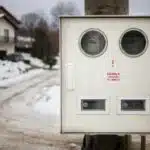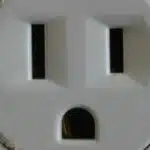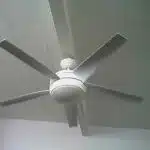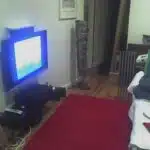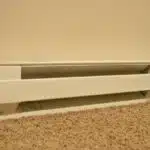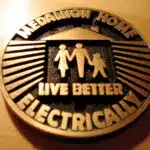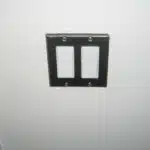Installing wall sconces can add a touch of elegance to any room. Wall sconces are versatile and can be used for ambient, accent, or task lighting purposes. They also free up space on your floor and tabletops, making them an ideal choice for small spaces. However, installing a wall sconce may seem intimidating to those who have never done it before. In this article, we will guide you through the process of installing a wall sconce step by step so that you can enjoy the benefits of having beautiful lighting in your home.
Before you begin the installation process, it is important to gather all the necessary tools and materials. You will need a voltage tester, wire strippers, wire nuts, screws and anchors, a screwdriver, pliers or wire cutters, and of course, your new wall sconce. It is also important to turn off the power at the circuit breaker before beginning any electrical work. By following these instructions carefully, you will be able to install your wall sconce safely and efficiently in no time.
Planning And Preparation
Before installing a wall sconce, it is important to have a plan and prepare accordingly. This includes budgeting tips to ensure you have all the necessary materials and tools without overspending. Consider the cost of the sconce itself, as well as any additional wiring or installation fees if needed.
Safety precautions should also be taken into account during planning and preparation. Ensure that the area where you will be installing the sconce is free of any potential hazards such as water sources or electrical outlets. Make sure you have all necessary safety gear, including gloves and eye protection, before beginning installation.
Choosing the right wall sconce is crucial in achieving your desired look and functionality. In the next section, we will discuss key factors such as size, style, and placement in order to help guide your decision-making process. By taking these steps in planning and preparation, you can ensure a successful installation of your wall sconce while prioritizing your safety and budget.
Choosing The Right Wall Sconce
When it comes to choosing the right wall sconce, style is key. Sconces come in a wide variety of styles, from traditional to modern, and it’s important to select one that complements the overall aesthetic of the room. For example, if your room has a vintage or antique vibe, consider investing in a more ornate sconce with intricate details. On the other hand, if your room has a minimalist design, you might opt for a sleek and simple sconce.
Lighting placement is another crucial consideration when selecting a wall sconce. The height at which you install your sconce can significantly impact its effectiveness in providing illumination. A general rule of thumb is to place your sconce at eye level when standing in front of it. This will ensure that the light shines directly onto your face without causing any harsh shadows. However, if you’re using your sconces as accent lighting rather than task lighting, you may choose to install them higher or lower depending on the effect you’re trying to achieve.
Ultimately, the key to choosing the perfect wall sconce is striking a balance between style and function. By carefully considering both factors and taking your time during the selection process, you’ll be able to find a sconce that not only looks great but also meets all of your lighting needs. In the next section, we’ll discuss how to measure and mark the placement for your new wall sconces so that they’re installed correctly and effectively illuminate your space.
Measuring And Marking The Placement
The placement of the wall sconce is crucial to its functionality and aesthetic appeal. Therefore, prior to installing the fixture, it is essential to measure and mark the spot where it will be mounted accurately. Measuring techniques vary depending on the type of sconce you are installing, but there are some general principles that apply.
One common mistake when measuring for a wall sconce installation is failing to consider the height at which you want the fixture mounted. The ideal height will depend on your preference and the purpose of the light source. For example, if you are mounting a sconce in a hallway or stairway, it should be installed at eye level so that people can see where they are going. Alternatively, in a living room or bedroom, you may want to install it higher up for better ambient lighting.
Another mistake many people make is not taking into account other elements in the room that might interfere with proper installation. For instance, if you have an outlet or switch close by where you want to install your sconce, you must ensure that there is enough clearance for wiring and mounting hardware. Additionally, if there is any artwork or furniture nearby that could block light from your new fixture, factor this into your measurements as well.
Now that we’ve covered some measuring techniques and common mistakes to avoid let’s move on to turning off the power before installation. This step is critical for safety reasons and should never be skipped or overlooked. Before beginning any electrical work always turn off power at the circuit breaker or fuse box. It’s also advisable to use a voltage tester to verify that no electricity is flowing through wires before proceeding with any further steps in the installation process.
Turning Off The Power
After measuring and marking the placement of your new wall sconce, it’s time to turn off the power before installing. Safety precautions should always be taken when working with electricity, so make sure you have a basic understanding of electrical knowledge before attempting this installation.
Firstly, locate the circuit breaker box and find the switch that controls the power to the room where you will be installing the sconce. Turn off that switch to ensure there is no electric current running through the wires. If you are unsure which switch controls that particular room, it is best to turn off all switches in your home just to be safe.
Secondly, use a voltage tester or multimeter to double-check that there is no electrical current flowing through any exposed wires. This step may seem excessive but it’s better to be safe than sorry when dealing with electricity. Simply touch the tester or multimeter probes to each wire and if there is no reading displayed on the device, then it’s safe to proceed with removal of your old fixture (if applicable).
Now that you have turned off the power and checked for any live wires, you can confidently move onto removing your old fixture (if applicable). This step will vary depending on what type of fixture you are replacing but typically involves unscrewing a few screws or bolts holding it in place. Be sure to save any screws or hardware as you may need them for later in this installation process.
Removing The Old Fixture (If Applicable)
Removing the old fixture is a crucial step in installing wall sconces. Before you start removing any fixture, make sure to turn off the power supply to avoid getting electrocuted. If you are not familiar with electrical work, consider hiring a licensed electrician to do it for you.
When removing fixtures, use a screwdriver or pliers to loosen and take out the screws that hold the fixture onto the wall. Once you have removed all of the screws, gently pull the fixture away from the wall to expose its wiring. Carefully disconnect any wires that connect your old fixture to your home’s electrical system using wire cutters or strippers.
Disposing of old fixtures should be done properly and safely. Do not just throw them into your regular trash bin as they can pose risks to both people and the environment. Consider donating them if they are still in good condition or bring them to a recycling center near you. Proper disposal of old fixtures shows responsible behavior towards our planet and ensures that no one gets hurt by improper handling.
With the old fixture removed and disposed of properly, it is now time to attach the mounting bracket onto the wall where you want your new sconce installed.
Attaching The Mounting Bracket
Imagine you are building a house. The foundation is laid, the walls are up, and the electrical wiring is in place. Now it’s time to add some personality and style to your home by installing wall sconces. But before you can enjoy the warm glow of your new lighting fixtures, you need to properly attach the mounting bracket.
First, make sure you have the correct type of mounting bracket for your wall sconce. There are various types available, such as those that attach directly to an electrical box or ones that require additional hardware for installation. Once you have the appropriate bracket, hold it up against the wall where you want to install your sconce and mark the location of any screw holes.
Next, using a power drill and appropriate screws for your wall type (drywall versus plaster), attach the mounting bracket securely to the wall. It’s important that this step is done correctly because once it’s installed, it will support both the weight of your sconce and any additional decorations or accessories.
Now that your mounting bracket is securely attached to the wall, you can move on to wiring your wall sconce. This process involves connecting wires from your electrical box with those from your sconce using wire nuts or other connectors. But before we delve into this topic further, let’s first ensure that our mounting brackets are installed safely and correctly so we can enjoy our new lighting fixtures without worry.
Connecting The Wires
Now that the wires are stripped and twisted together, it’s time to check the connections. Before turning on the power, double-check that all wires are connected to the correct terminal screws. If there are any doubts or uncertainties, consult the manufacturer’s instructions or a licensed electrician for guidance. Once you’re confident in your connections, you can move on to testing the light.
Remember to take safety precautions when working with electricity. Turn off the power at the circuit breaker before touching any wires and wear insulated gloves if possible. Keep children and pets away from the work area and never touch anything metal while standing on a wet surface.
With all safety measures in place, turn on the power at the circuit breaker and test your wall sconce. If everything is functioning properly, proceed to attach the wall plate. If there are any issues with your wiring or if the light doesn’t turn on, turn off the power immediately and recheck your connections.
Transitioning into attaching the wall plate: Now that you’ve successfully connected your wires and tested your light fixture, it’s time to secure it to your wall with a wall plate.
Attaching The Wall Plate
After determining the wiring situation, the next step in installing a wall sconce is attaching the wall plate. The position of the wall plate should be carefully considered before screwing it into place. It should be positioned at a height that is comfortable for the intended use of the sconce, such as reading or accent lighting.
Once the appropriate height is determined, mark the location of the wall plate with a pencil. The wall plate should be centered over the electrical box and leveled using a carpenter’s level. When screwing in the screws to attach the wall plate, make sure they are tight enough to hold the weight of the sconce securely.
Wall plate positioning and screwing may seem like simple steps, but they are crucial to ensuring a safe and secure installation. Take your time during this process to avoid any mistakes that could lead to damage or injury. With proper positioning and secure attachment, you can move on to installing the bulbs and enjoying your new wall sconce lighting.
Installing The Bulbs
After attaching the wall plate, the next step is to install the bulbs into the sconce. Before doing so, it’s important to choose the right bulb type. The most common types of bulbs for wall sconces are incandescent, LED, and halogen. Incandescent bulbs emit a warm, yellowish glow but are less energy-efficient than LED and halogen bulbs. LED bulbs use less energy and last longer than other bulb types while providing bright light. Halogen bulbs offer a crisp white light that closely resembles natural daylight.
Common mistakes when installing bulbs include using bulbs with wattage higher than recommended by the manufacturer or touching the bulb with bare hands. It’s essential to read the manufacturer’s instructions regarding the maximum wattage before installing any bulb in your fixture. Using a bulb with higher wattage can cause overheating, which may lead to melting of insulation or even fire hazards. Additionally, touching a bulb with bare hands can cause oils from your skin to transfer onto the glass surface of the bulb and shorten its lifespan.
After choosing the right bulb type and ensuring that you have followed all manufacturer’s recommendations, it’s time to test your fixture. Turn on your light switch and check if everything is working correctly as expected. If you find any issue such as flickering or dimming lights, double-check if all connections are tight enough or if you have installed incompatible parts together. Testing ensures that your installation was successful and gives you peace of mind knowing that everything works fine without any issues or hazards present within your home lighting system.
Testing The Fixture
Did you know that 80% of home lighting installations fail due to improper testing methods? Testing the fixture is a crucial step in ensuring the safety and functionality of your wall sconce. There are several testing methods you can use to make sure your installation is working properly.
One common problem with wall sconces is flickering or dimming lights. If this occurs, check the wiring connections to make sure they are secure and properly connected. Another issue could be a faulty bulb, so try replacing it with a new one. If these solutions do not solve the problem, it may be an issue with the electrical circuit and you should consult a professional.
To test your wall sconce, turn on the light switch and observe any abnormalities such as flickering or buzzing sounds. Use a voltage tester to ensure that power is being delivered correctly to the fixture. You can also physically inspect the fixture for any loose wires or damaged parts.
Now that you have tested your wall sconce and ensured its proper functionality, it’s time to adjust its position and angle for optimal lighting.
Adjusting The Sconce
To maximize the light output of your wall sconce, adjusting its angle is crucial. The angle at which your sconce is installed can make a huge difference in the amount of light it produces. To adjust the angle, first loosen the screws or bolts that hold the mounting bracket in place. Then, gently move the sconce up or down until it’s at the desired angle and tighten the screws or bolts back up.
It’s important to note that adjusting the angle of your wall sconce may also affect its appearance and overall aesthetic. Take some time to step back and assess how it looks before tightening everything up. Is it in line with other fixtures in the room? Does it cast shadows in unwanted places? Adjust accordingly.
By maximizing light output and ensuring proper aesthetic placement, you’ll be able to get the most out of your wall sconce installation. In the next section, we’ll cover securing the sconce to ensure it stays safely and securely in place for years to come.
Securing The Sconce
Before securing the wall sconce, make sure to choose the appropriate mounting option for your type of wall. Different mounting options include using screws and anchors, toggle bolts, or a mounting plate. The chosen method should be able to support the weight of the sconce and withstand any external forces that may come in contact with it.
Once you have decided on the mounting option, gather all the proper tools needed for securing the sconce. These tools may include a drill, screwdriver, level, and measuring tape. It is important to have these tools readily available before starting installation to ensure a smooth process.
To secure the sconce, begin by holding it up against the wall and making sure it is level. Mark where the screws or other mounting hardware will go using a pencil or marker. Then proceed to drill holes into those marked areas and insert anchors or other hardware as necessary. Once this step is complete, attach the sconce to the wall using screws or any other provided hardware according to manufacturer instructions.
With your sconce now securely mounted onto your wall, proceed onto restoring power to it so that you can enjoy its warm glow in your home.
Restoring Power
Before proceeding with the installation of a wall sconce, it is crucial to check the circuits and restore electricity. This step ensures that there are no electrical issues that may cause harm to both you and your home. Checking circuits involves examining the circuit breaker or fuse box to ensure everything is in order. Be sure to turn off the power supply before moving on to the next step.
Once you have ensured that the circuits are working correctly, restoring electricity is the next step. To do this, locate the main circuit breaker or fuse box in your home and switch it back on. It is essential to take your time when doing this as switching it on too quickly can cause a power surge that may damage electrical appliances and devices in your home.
After restoring electricity, double-check all connections to ensure they are secure before proceeding with installing the wall sconce. Neglecting this step may lead to faulty wiring, which increases the risk of electrical fires. Remember, safety should always be a top priority when handling any electrical work.
- Check circuits for any faults or damages
- Turn off power supply from main circuit breaker or fuse box
- Restore power by switching on the main circuit breaker or fuse box slowly
- Double-check all connections before proceeding with installation
Next, let’s discuss common issues that may arise during wall sconce installation and how to troubleshoot them effectively.
Troubleshooting Common Issues
Installing a wall sconce can be an exciting experience. It adds a touch of elegance to any home, but what happens when things go wrong? As an expert in home lighting installation, I have seen it all. In this section, we will discuss some common issues that arise during the installation process and provide troubleshooting tips to help you overcome them.
One of the most common solutions to problems with wall sconces is checking the wiring. If the light is not turning on, check the wiring connections and ensure they are properly secured. Sometimes, wires may come loose while installing the fixture or may not be connected correctly. This issue can be quickly resolved by tightening connections or rewiring as needed.
Another issue that homeowners face is flickering lights. This is typically due to a problem with the bulb or wiring. Check to make sure that you are using the correct wattage for your fixture and that bulbs are properly seated in their sockets. If this does not resolve the issue, check for any loose wires or faulty wiring connections. Troubleshooting tips like these can help you easily solve common problems and enjoy your new sconce without frustration.
Now that you know some troubleshooting tips for common wall sconce issues, sit back and enjoy your new lighting fixture! With proper installation and maintenance, your wall sconce will continue to provide beauty and functionality for years to come. Remember to always follow manufacturer instructions when installing fixtures and consult with a professional if you have any doubts about electrical work in your home.
Enjoying Your New Wall Sconce
Choosing the style of your wall sconce is an important decision. There are many different styles to choose from, including modern, traditional, rustic, and industrial. Consider the overall design aesthetic of your room when making your selection. If you have a more traditional room, then a classic-style sconce may be the best choice. For a more modern space, consider a sleek and contemporary design.
Maintaining your wall sconce is crucial to ensuring its longevity. Regular dusting and cleaning can keep it looking new for years to come. Be sure to turn off the power before cleaning or changing bulbs. If there is any rust or damage, address it immediately to prevent further deterioration. Regular maintenance will not only extend the life of your sconce but also prevent any safety hazards.
Overall, installing a wall sconce can add both beauty and function to your home lighting design. By selecting the right style and properly maintaining it, you will enjoy your new sconce for many years to come. Remember that with proper care and attention, you will get the most out of this investment in both style and functionality for your home lighting needs.
Conclusion
Installing a wall sconce requires careful planning and preparation. It is essential to choose the right sconce, measure and mark the placement, turn off the power, and remove any old fixtures before securing the new sconce in place. Once installed, restoring power and troubleshooting common issues may be necessary.
While some may view installing a wall sconce as a simple task, it is important to approach it with caution and attention to detail. The truth is that even seemingly straightforward electrical installations can pose safety risks if not performed correctly. As a home lighting installation expert, I encourage homeowners to educate themselves on proper installation techniques and seek professional assistance if needed. With proper planning and execution, installing a wall sconce can be a rewarding DIY project that adds both function and style to your home’s interior design.
Image Credits
- “Wall sconce” by Ryan Howerter (featured)







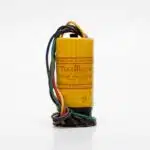



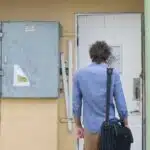


![How To Replace A Single-Pole Wall Switch 14 '... All in all it's just another [switch] in the wall.' ...](https://green-life.blog/wp-content/uploads/2023/05/17xmP5qMtVjq-150x150.jpg.webp)
